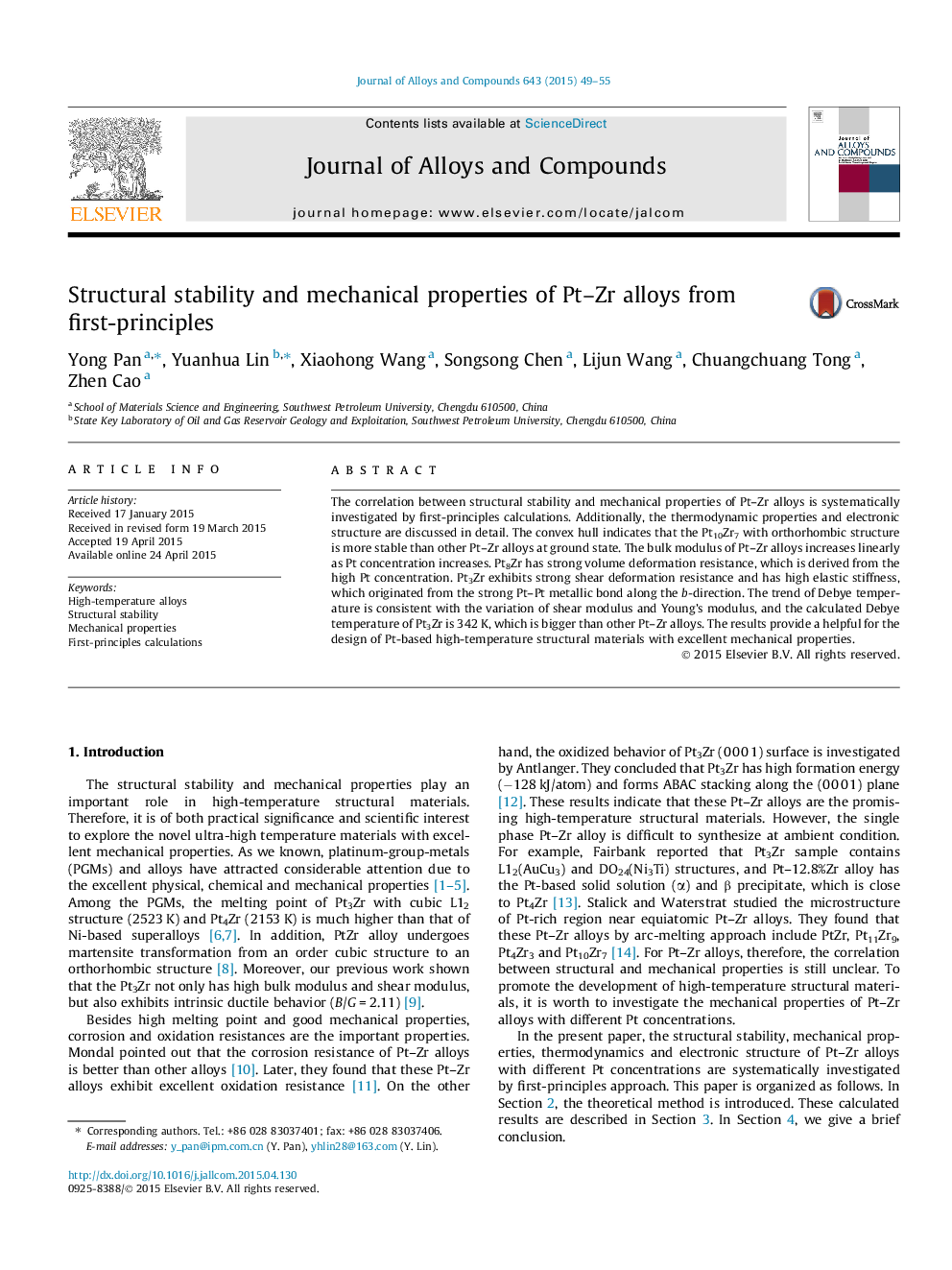| Article ID | Journal | Published Year | Pages | File Type |
|---|---|---|---|---|
| 1608816 | Journal of Alloys and Compounds | 2015 | 7 Pages |
•The convex hull indicates that Pt11Zr7 is the most stable structure.•Pt8Zr has the strongest volume deformation resistance.•Pt3Zr has the strongest shear deformation resistance and has highest stiffness.•The high elastic modulus originated from Pt concentration and bond characteristic.
The correlation between structural stability and mechanical properties of Pt–Zr alloys is systematically investigated by first-principles calculations. Additionally, the thermodynamic properties and electronic structure are discussed in detail. The convex hull indicates that the Pt10Zr7 with orthorhombic structure is more stable than other Pt–Zr alloys at ground state. The bulk modulus of Pt–Zr alloys increases linearly as Pt concentration increases. Pt8Zr has strong volume deformation resistance, which is derived from the high Pt concentration. Pt3Zr exhibits strong shear deformation resistance and has high elastic stiffness, which originated from the strong Pt–Pt metallic bond along the b-direction. The trend of Debye temperature is consistent with the variation of shear modulus and Young’s modulus, and the calculated Debye temperature of Pt3Zr is 342 K, which is bigger than other Pt–Zr alloys. The results provide a helpful for the design of Pt-based high-temperature structural materials with excellent mechanical properties.
Graphical abstractFigure optionsDownload full-size imageDownload as PowerPoint slide
